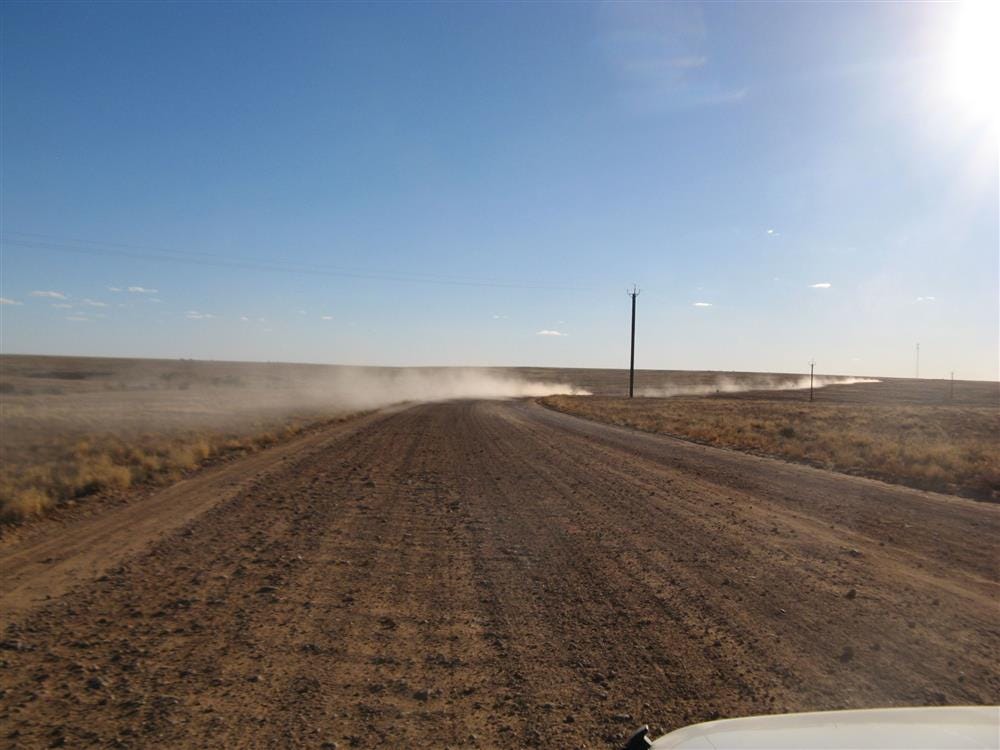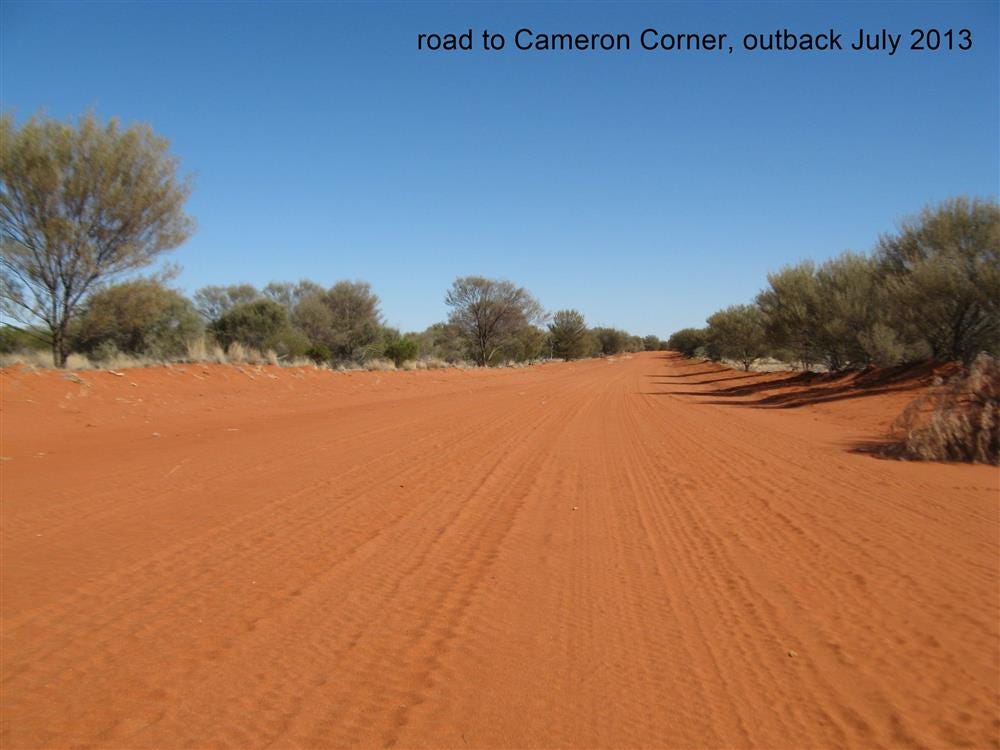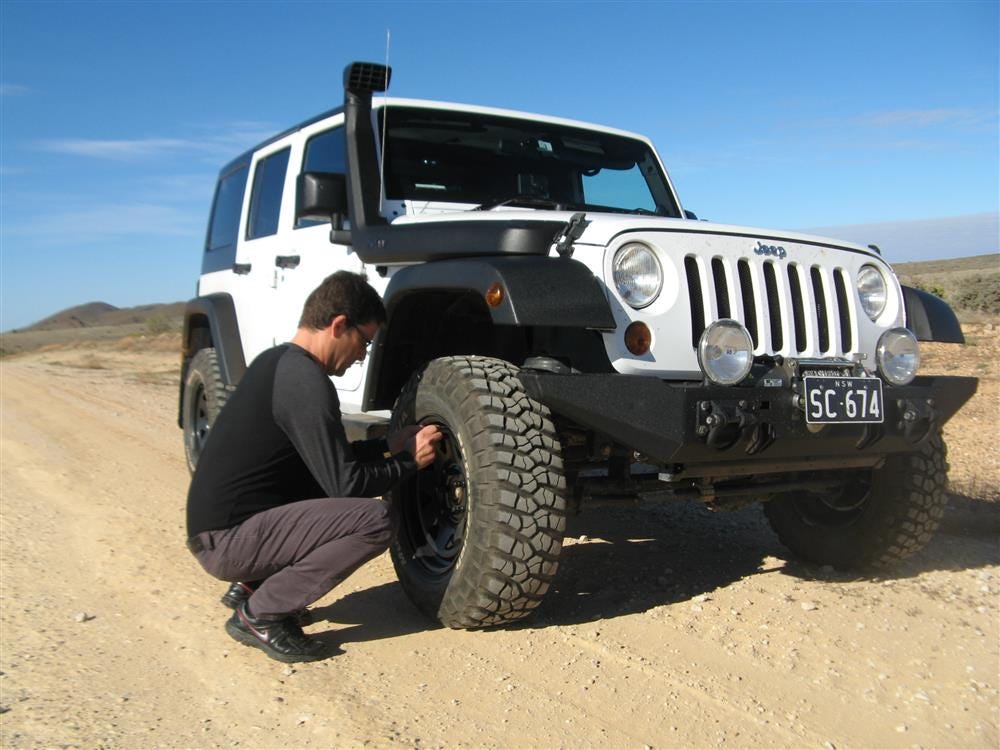Steve Cassano has been a qualified and accredited 4WD trainer for 8 years, providing training to mining, gas and other resource sectors as well as recreational drivers regardless of vehicle model or driver experience.
He is passionate about passing invaluable knowledge for setting up your 4WD and trailer to tackle the great roads and tracks of Australia and has contributed to some of Australia's leading 4WD magazines such as Practical Motoring, Time To Roam and 4WD Touring Australia. Steve currently has a monthly column with Camper Trailer Australia.
So it's safe to say he is well experienced in 4WDing on corrugations. In this blog, he talks about the top two considerations you need to know when driving over these trying road conditions.
4WDing on corrugations, not everyone’s favourite activity
Often there will be different driving conditions encountered when behind the wheel of a 4WD. Many people plan weeks or even months ahead to tackle a track or just to reach a distant place, which gets the adrenalin pumping. I thrive on driving in challenging terrains, like sand, rocks and technical tracks. But on top of these exciting encounters, I really get a buzz from exploring the country, seeking out its history and attractions. Whether it’s close by or a destination many thousands of kilometres away, it’s always an adventure.
If like me you love touring off the blacktop, it’s inevitable you’ll hit corrugations in your travels. It’s rarely enjoyable, more so downright annoying and even dangerous if you're unprepared.
I’d like to suggest a few ideas that’ll make traversing corrugations (and other adverse road conditions) a little more bearable and safer.
Preparation for the 4WD and passengers
Outback tourers who anticipate travelling off-road and especially if towing or with a car full of kids, camping equipment, fuel and the kitchen sink, really need to ask themselves if the vehicle is up to the task.
There are a thousand-and-one-things that owners do to hopefully improve comfort capability, reliability and safety as well as the aesthetics (everyone loves a tough looking 4WD). If you anticipate encountering corrugations, then there are two modifications I suggest that should be your priority.
1. Tyres and rims perhaps
The majority of outback roads you will encounter will be made up of various elements none more so than those riddled with corrugations. Corrugations can compose of sand, gibbers, gravel and even mud and plain old dirt and they’re hard on tyres.
With a few exceptions, most new 4WDs from the dealer come standard with HT (Highway Terrain) tyres and are classed as passenger tyres.
These OEM tyres, like many other standard fittings, are a compromise on comfort, ride, longevity and definitely price. Their construction composes of thinner and softer materials with more shallow tread depth and nominal aggression with a bias towards on-road use and performance.
This is all very nice for the occasional weekend warrior who doesn’t venture far off the tar but goes beyond that boundary and you’re more likely going to regret it, especially over rougher tracks which can heighten the likelihood of tyre failure. They simply won’t cope with the incessant abuse from outback corrugations, washouts and other unforeseen challenges over extended periods.


Approaching Innamincka has one of the worst corrugations says, Steve
My suggestion to minimise tyre failure and improve overall performance is to fit a set of quality AT (All-Terrain) or MT (Mud Terrain) tyres of LT (Light Truck) construction. LT tyres compared to HT tyres have a deeper tread, thicker composition and a more aggressive tread pattern to improve traction on various roads and in varying conditions. Think of the tyres as being part of the overall suspension or really more so working in tandem with the suspension.
Like many hundreds of owners, I’ll comfortably argue that I’ve never had issues with AT tyres but for me having used AT and MT tyres and while the AT tyres performed faultlessly, it's MT tyres as my preferred choice. On the real rough corrugations, I found the larger rubber tread blocks better at absorbing the impact of corrugations and provided notably better traction on a range of tracks.
If the vehicle is fitted with low profile tyres, option for a smaller wheel diameter if possible. This is best done at purchase (cheaper) or even afterwards without compromising overall tyre dimensions too much. Having a higher profile tyre has many benefits such as improving tolerance to corrugations, increased comfort and better availability in remote areas in case of tyre failure.
2. Suspension
Like tyres, the standard suspension fitted to 4WDs is a compromise on comfort, ride and performance at an acceptable cost.
Installing new or upgraded suspension is one of the most rewarding improvements that can be made to a 4WD but should not be taken lightly. There are many cheap upgrades available, especially online and while these are tempting it’s not just a matter of bunging in a set of shock absorbers and heavy duty springs.
A quality suspension system should compose of multiple components and needs to work seamlessly together. That’s why I suggest getting a complete suspension package, rather than tacking on bits and pieces.
Regardless of age or model 4WD, focus on suspension and steering components such as shock absorbers and springs, all the links and mounting points, control arms, suspension bushes, and sway bar links, tie rod ends, ball joints and bump stops to name just a few.
Have it installed or checked by a 4WD specialist in suspension as they’re more likely to have the tools and knowledge to do so as well as fine-tuning the performance to suit your needs.
A fully kitted suspension upgrade can cost a few pennies but it’ll be money well spent and very rewarding once you hit those corrugations.


Conclusion
As a few last thoughts when travelling corrugations and as a matter of normal procedure, ensure that all your cargo is tied down securely. Don’t forget to check things like your dual battery systems, pure sine wave inverters and other electrical add-ons. That’s when I appreciate REDARC's sturdy metal mounting points as electrical fires are a big threat when things come loose.
This goes hand in hand with a thorough regular and vehicle inspection after travelling corrugations. Pay particular attention to ancillary equipment such as driving lights, UHF aerials and the spare wheel, roof racks and their contents plus wheel lugs and all suspension components.
Finally, don’t forget to adjust the tyre pressures. Lowering pressures will result in several advantages including improved comfort by absorbing the impact from the corrugations whilst allowing the tyre to mould over errant rocks plus improve traction in sandy terrain. Remember to regulate the speed as handling and braking can be compromised when driving corrugations on lower pressures.


Adjusting tyre pressure is a must
Depending on vehicle model, weight and even tyre styles, for me driving a medium-sized 4WD on MT tyres, I found that knocking off about 40% from normal road pressures was a good starting point but experimentation will be required.
I hope that these suggestions help better tackle those corrugations successfully and safely.
Happy Wheeling
Steve Cassano
